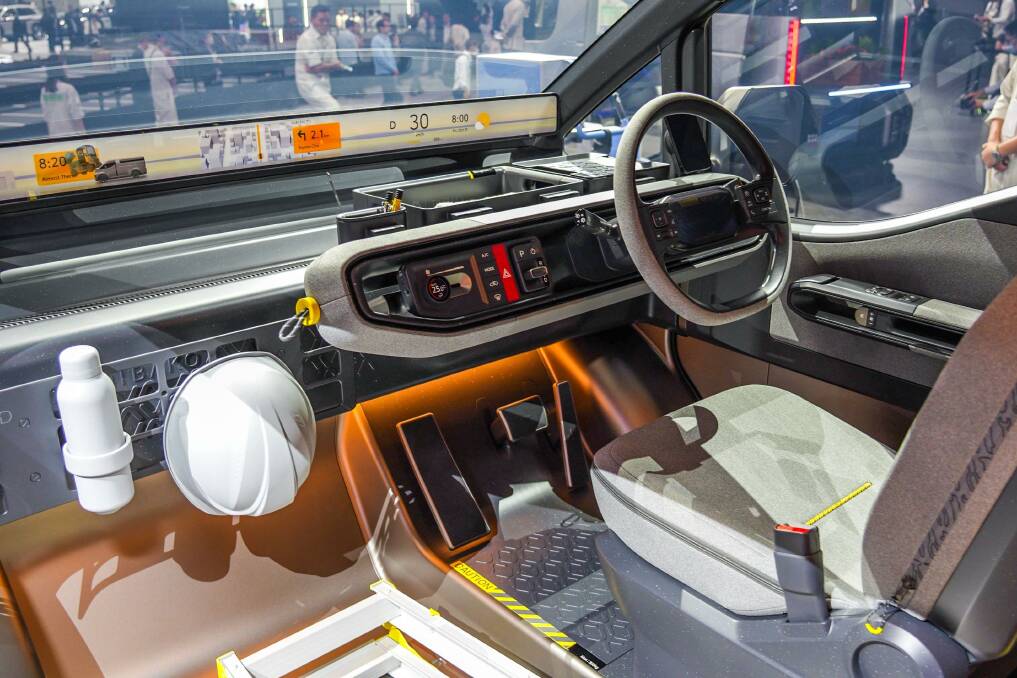
Toyota showcased its latest advancements in van design at the 2025 Tokyo Motor Show, introducing the innovative HiAce Concept and the smaller Kayoibako models. These vehicles highlight a potential shift towards more versatile and user-friendly transportation solutions, particularly appealing to various markets, including Australia.
At the event, multiple variants of the HiAce Concept drew significant attention. One version featured a rolling medical centre, equipped with a comfortable green couch, a large screen for virtual consultations, and a swivelling passenger chair that doubles as an examination seat. This design also incorporates dedicated storage for medical supplies, such as oxygen tanks and first aid equipment. A display strip on the passenger door communicates waiting times and the status of patients.
Another variant of the HiAce Concept was designed as a work vehicle. It has a lower roof and shorter wheelbase, featuring dual sliding rear doors, a shelving unit, and a single driver’s seat. Both vehicle variants benefit from front doors that open up to 90 degrees and large sliding rear doors, facilitating easy access for loading and unloading.
The absence of a B-pillar between the front and rear doors on the passenger side streamlines the process of moving large items to the curbside. Additionally, the vehicles boast a full-width infotainment and instrumentation display along the base of the windscreen, complemented by a simplified dashboard featuring physical climate controls and a flat-bottom two-spoke steering wheel. Storage solutions are plentiful, with bins and holders strategically placed around the dashboard area.
While Toyota has not disclosed specific details about the HiAce Concept’s drivetrain, its cab-forward design, raised flat floor, and short bonnet suggest a potential electric drivetrain. This aligns with the growing trend towards electrification in the automotive industry.
Kayoibako Concepts: A Focus on Versatility and Autonomy
Alongside the HiAce, Toyota introduced the Kayoibako vans, which feature sliding front and rear doors for enhanced accessibility. One model, the Kago-Bo, is designed for autonomous taxi fleets, equipped with a sensor pod on the roof to facilitate self-driving capabilities. Its spacious cabin lacks traditional driving controls, instead featuring a sofa-like rear seat to prioritize passenger comfort.
A smaller variant, the Daihatsu Kayoibako-K, showcases a kei-class design with a single large sliding door on the passenger side and a conventional forward-hinged door for the driver. This model retains elements from the HiAce Concept, including a dashboard pod, although it has been modified to include a plane-style yoke in place of the standard steering wheel and now features a smartphone holder instead of the full-width display.
The HiAce was initially intended to be the largest of the Kayoibako concepts, raising questions about its branding change. This shift may reflect production intentions or other strategic decisions by Toyota. The current generation of the HiAce, which debuted in 2019, has a legacy of longevity, with previous models remaining in production for over 15 years.
As the automotive industry evolves, the potential introduction of an electric HiAce could complement the existing petrol and diesel offerings. This could position Toyota well in the market as consumers increasingly seek sustainable transportation solutions.
The developments at the Tokyo Motor Show signal Toyota’s commitment to innovation and adaptability in a rapidly changing automotive landscape, with a focus on meeting diverse consumer needs.







